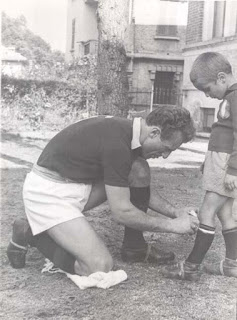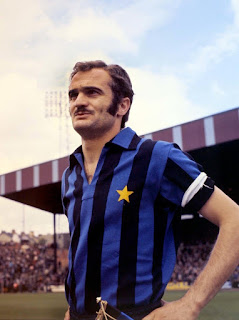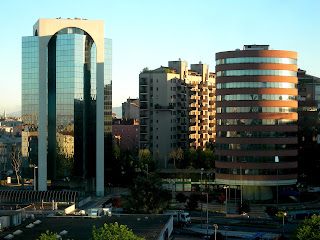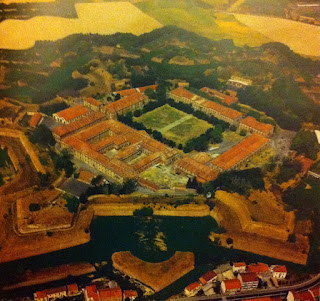Tragic star may have been Italy’s greatest player
 |
| Valentino Mazzola scored more than 100 goals in Serie A |
The footballer Valentino Mazzola, captain of the mighty Torino
team of the 1940s, was born on this day in 1919 in Cassano d’Adda, a town in
Lombardy about 30km (19 miles) northeast of Milan.
Mazzola, a multi-talented player who was primarily an
attacking midfielder but who was comfortable in any position on the field, led
the team known as Il Grande Torino to five Serie A titles in seven seasons
between 1942 and 1949.
He scored 109 goals in 231 Serie A appearances for Venezia
and Torino and had become the fulcrum of the Italy national team, coached by
the legendary double World Cup-winner Vittorio Pozzo.
In just over a decade at the top level of the Italian game he
achieved considerable success and some who saw him play believe he was the
country’s greatest footballer of all time.
His life was cut short, however, when he and most of the
Grande Torino team – and at the same time the Italian national team – were
killed when a plane carrying them home from a friendly in Portugal crashed in
thick fog on its approach to Turin airport on May 4, 1949.
The Superga Disaster – so-called because the aircraft collided
with the rear wall of the Basilica of Superga, which stands on a hill overlooking
the city – claimed the lives of 18 players, including all bar one of the Torino
first team, as well as the team’s English coach, Leslie Lievesley, and four
other officials, plus three journalists and all of the crew. Of the 31 on
board, no one survived.
 |
| Mazzola in action for the Italian national team in 1947 |
It was a tragedy of which there were eerie echoes in the
Munich Disaster of nine years later, when many members of a talented Manchester
United team were killed, including Duncan Edwards, who though much younger had
similar qualities to Mazzola and many thought had the potential to become the
English game’s greatest player.
Mazzola was il Grande Torino’s leader and inspiration, known
for literally rolling up his sleeves when his team were not playing up to the
standard he demanded, a habit that came to symbolise his determination and to lift
those around him. If a game was not going well, the crowds in Torino’s old
Filadelfia stadium would watch for the moment Mazzola gave the cue and would
respond with a roar of encouragement for the team.
His character on the football field was a reflection of his
life, which had seen him show bravery in the face of adversity in many ways.
Born in a poor neighbourhood, he had to leave school early
after his father, a labourer, was laid off as the Wall Street Crash of 1929 began
to reverberate across the world, taking a job as a baker’s boy and, at the age
of 14, in a linen mill on the Adda river.
He had demonstrated his selfless courage at the age of 10
when he dived into the fast-flowing waters of the Adda to save the life of a
six-year-old boy. By an extraordinary
coincidence, the boy who would likely have drowned had Mazzola not come to the
rescue was Andrea Bonomi, a future footballer who would go on to captain a
title-winning AC Milan team.
Mazzola played for two local teams, Tresoldi and Fara
d’Adda, where his talent was noted by an employee of Alfa Romeo, the car
manufacturer which had a plant in Arese, on the outskirts of Milan.
 |
| Valentino with his son Sandro, who would grow up to be a star like his father |
Factories at the time in Italy regarded a successful
football team as good for prestige and Alfa Romeo were particularly proud of
theirs, which played at a semi-professional level in Serie C, the third tier of
the Italian league system. Companies
were keen to find good players and the reports they heard about this boy from
Cassano d’Adda prompted Alfa Romeo to offer him training as a mechanic if he
would play for their team.
For the Mazzola family, the timing could not have been
better. His father, sadly, had been killed when he was hit by a truck and this
offer of a job enabled Valentino to become a breadwinner.
His career evolved despite the outbreak of war in 1939. Conscripted to the Royal Italian Navy, he was
based in Venice and was soon invited to play for Venezia, making his Serie A
debut in 1940 at the age of 21.
He moved to Torino after Venezia won the Coppa Italia in
1941 and finished third in Serie A in 1942, just a point behind the Turin team,
who paid 200,000 lire for his services.
In Turin he worked for FIAT at their Lingotto plant.
Mazzola won his first scudetto in 1943, his second in 1945
and then three in a row from 1947 to 1949, by margins of 13 points, 10 points
and a record 16 points. The names of Eusebio Castigliano, Mario Rigamonti,
Rubens Fadini, Romeo Menti, Ezio Loik, Gugliemo Gabetto and Franco Ossola as
well as Mazzola became the talk of Italy, giving hope to the national team too.
 |
| The wreckage of the plane in which Mazzola and his Grande Torino teammates perished |
In the desperate poverty of the immediate post-war years,
life in Italy was grim but when the Italian national team beat Hungary 3-2 in a
friendly in 1947, with 10 of the 11 Azzurri players coming from Torino, it gave
the country a considerable fillip. Mazzola won 12 caps, although it would have
been more but for the Second World War, which also denied him the chance to
participate in a World Cup.
Away from football, Mazzola was a quiet person who valued
his privacy. In Turin in 1942, he
married Emilia Rinaldi, moved into an apartment on Via Torricelli and they had
two sons, Ferruccio and Sandro. The latter would grow up to play for Internazionale
of Milan and become even more decorated than his father, winning the scudetto
four times and the European Cup twice, as well as winning a European
championship winners’ medal with Italy in 1968 and playing in the World Cup
final in 1970.
He and Rinaldi separated in 1946 and he married for a second
time in April 1949 to 19-year-old Giuseppina Cutrone, only to be killed just 10
days later. He is buried in the Monumental
Cemetery in Milan.
 |
| The Borromeo Castle by the Adda at Cassano d'Adda |
Travel tip:
Cassano d’Adda sits on the eastern bank of the Adda, the
river that has shaped its history in may ways. The town developed as a result
of the crossing there, which gave it a strategic importance that led it to be
the site of several battles over the centuries, from Roman times to the French
Revolutionary Wars of the 18th century. It is notable for the Borromeo
Castle, built in around 1000 and significantly expanded by Francesco I Sforza
in the 15th century. At different times it has been owned by the
Venetians, the Spanish and the Austrians as well as by different Italian
families. Connected by canals with Milan
and Lodi, Cassano d’Adda grew prosperous in the 19th century through
linen manufacture using watermills.
 |
| The Basilica di Superga, near Turin |
Travel tip:
The Superga tragedy is commemorated with a simple memorial
at the site of the crash, at the back of the magnificent 18th
century Basilica di Superga. Mounted on
a wall, the damaged parts of which were never restored, is a large picture of
the Grande Torino team, with a memorial stone that lists all the names of the 31
victims of the disaster, under the heading I Campioni d’Italia. The basilica, which sits at an altitude of
some 425m (1,395ft) above sea level and often sits serenely in sunlight while
mist shrouds the city below, can be reached by a steep railway line, the
journey taking about 20 minutes.











